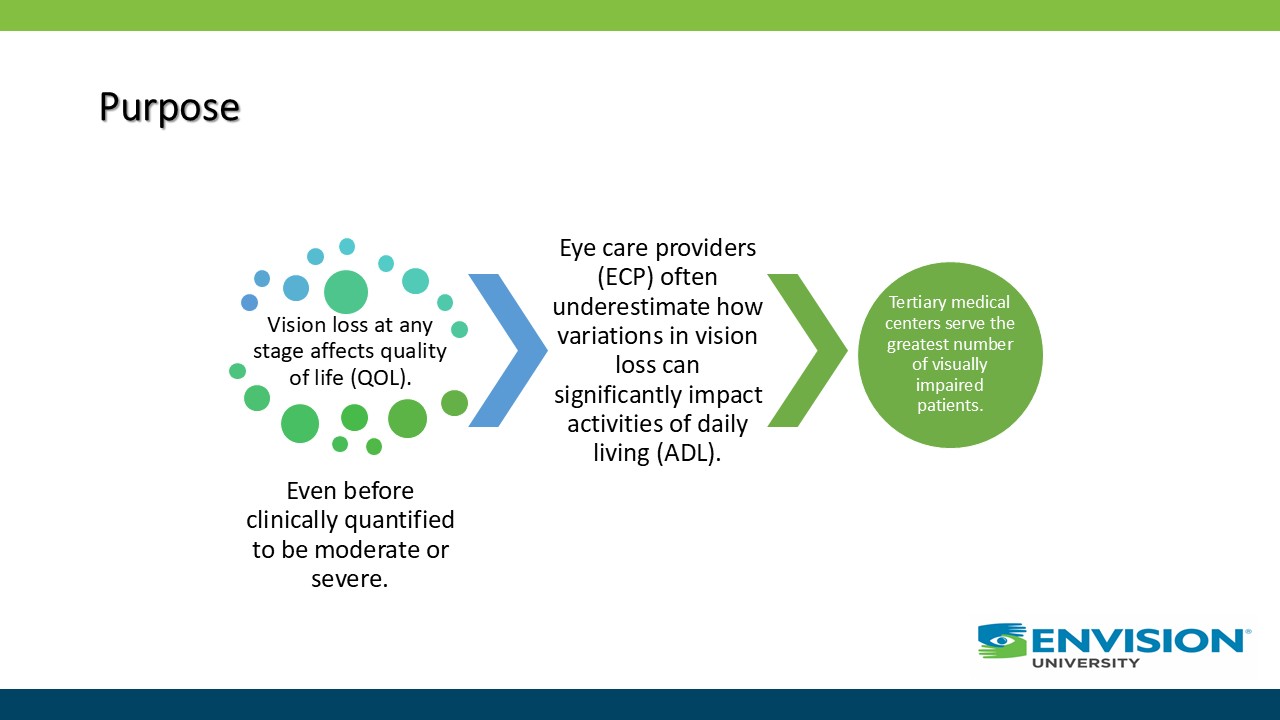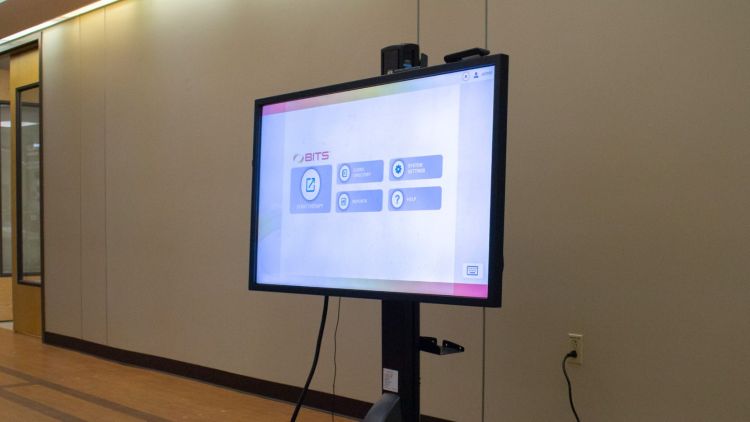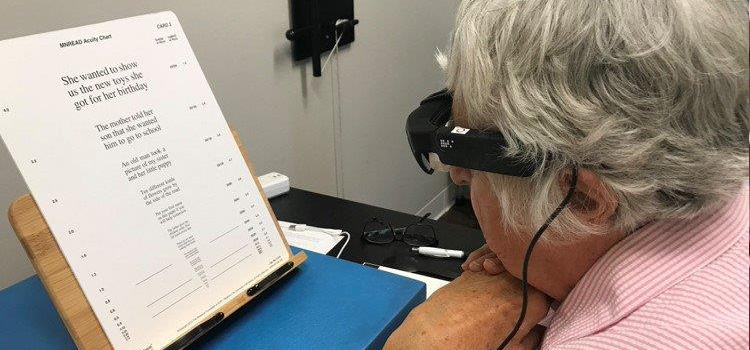
Visibility 19 Issue 2, 2025
Factors related to Patient Portal Activation at an Academic Medical Center by Low Vision Rehabilitation Patients or their Proxies
Kayla E. Gan, OTD, OTR/L; Ava K. Bittner, OD, PhD, FARVO
There are several possible barriers to the use of online patient portals (PP) for healthcare, including disparities and need for training to improve access and usability. We sought to determine the active usage rates for the PP and associated factors at an academic medical center that uses Epic, which is the most widely used electronic health records system in the U.S.

Visibility 19 Issue 1, 2025
Factors Influencing Referrals to Vision Rehabilitation at a Tertiary Medical Center
Sanbrita Mondal, OD; Christina Thomas-Virnig, PhD; Kyle Peterson MS
Functional vision loss at any stage affects quality of life (QOL) even before the loss is clinically quantified to be moderate or severe. Eye care providers (ECP) often underestimate how small variations in vision loss can have a significant impact on a patient’s activities of daily living (ADL). Tertiary medical centers serve the greatest number of visually impaired patients. Our study investigates what factors influence ECPs with vision rehabilitation service (VRS) referral decision-making at a tertiary medical center. We also further studied whether decision making was influenced by specialty, volume of practice, years of practice, number of practicing locations, gender and continuing education status. By understanding influencers on ECPs decision making, we will be able to make more targeted recommendations on workflow changes, continuing education and quality improvement processes to increase access to care bringing VRS forward once again as a standard of care.

Visibility 19 Issue 1, 2025
Preliminary Normative Data and Analysis of Visual Scanning Programs Using the Bioness Integrated Therapy System (BITS) for Healthy Young Adults
Lulwah Almulhim, PT, MSOT; Scott Snyder, PhD; Jason Vice, PhD, OTR/L, SCLV; Elizabeth Barstow, PhD, OTR/L, SCLV, FAOTA
To our knowledge, normative data for Bioness Integrated Therapy System (BITS) visual scanning programs have not been published. This study aims to fill that gap by providing preliminary benchmarks for young adults using User-Paced and Time-Paced programs of the BITS. We hypothesize that differences in reaction time will exist both within age group and between program types.

Visibility 18 Issue 2, 2024
Functional Performance, Technology and Quality of Life Among Adults with Vision Loss
Callie M. Victor, PhD, OTR/L, CLA, et al.
The purpose of this study was to examine how functional performance and the use of technology influence the quality of life for adults with vision loss. The research was guided by the following question: How do functional performance and the use of technology influence the quality of life for adults with vision loss? It was hypothesized that adults with vision loss who use technology daily would report higher quality of life.

Visibility 18 Issue 1, 2024
Using Smartphone AI App to Close the Gap in Public Transportation for Visually Impaired
Gang Luo, PhD; Shrinivas Pundlik, PhD
Visually impaired travelers often complain about difficulties in finding exact locations of bus stops in stipe of using GPS based navigation apps. We conducted a study to determine the severity of the problem and the causes. We also developed and validated a solution to address the micro-navigation issue in accessing bus stops
Showing 1-5 of 134 results
Next